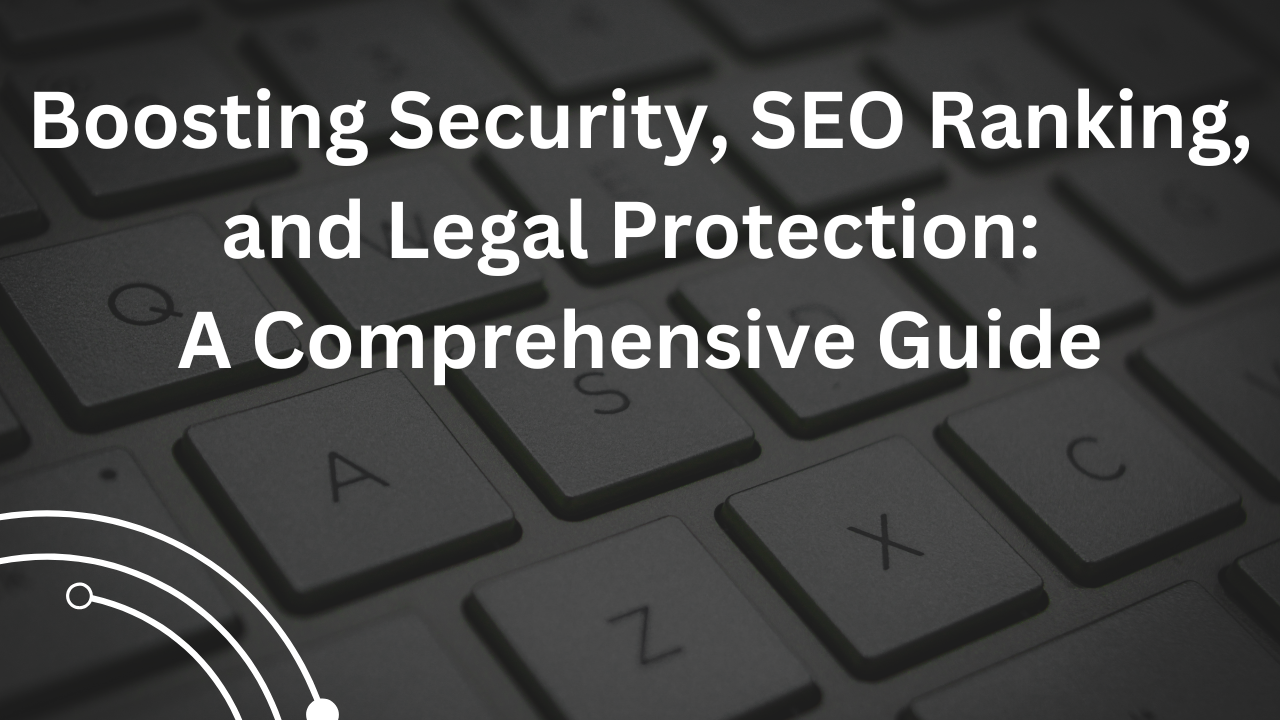Running an online business presents a world of opportunities, but it also comes with its fair share of challenges. Protect and Optimize Your Online Business from hacking attempts, legal complications, and maintaining a high SEO ranking are vital for long-term success. In this comprehensive guide, we will explore strategies to safeguard your online business, minimize the risk of getting hacked or sued, and ensure your website is optimized for better search engine rankings. Let’s delve into the essential steps you can take to protect and optimize your online business.
Web Security Compliance
Maintaining robust web security measures is crucial to protect sensitive data and prevent unauthorized access. In this section, we will cover key aspects of web security compliance, including:
- Implementing Secure Socket Layer (SSL) Encryption: SSL encryption establishes a secure connection between the user’s browser and the website, encrypting data during transmission. This safeguards sensitive information such as login credentials and financial details.
- Regular Software Updates and Patches: Keeping software, plugins, and themes up to date is vital to address vulnerabilities and security loopholes. Timely updates ensure that your website is protected against the latest threats.
- Strong Password Policies: Enforcing strong password policies for user accounts adds an extra layer of security. Encourage users to create unique, complex passwords and implement measures such as password complexity requirements and two-factor authentication.
ADA Web Compliance
Ensuring web accessibility for individuals with disabilities is not only a legal requirement but also promotes inclusivity and user satisfaction. Consider the following aspects for ADA web compliance:
- Providing Alternative Text for Images: Including descriptive alt text for images allows screen readers to convey the content to visually impaired users.
- Keyboard Accessibility: Ensure that all website elements can be accessed and navigated using a keyboard alone. This helps individuals who cannot use a mouse or other pointing devices.
- Proper Heading Structure and Semantic Markup: Use heading tags (H1, H2, etc.) appropriately to structure content. Semantic markup, such as using lists and proper heading hierarchy, improves screen reader interpretation.
SEO Compliance
Optimizing your website for search engines is vital for visibility and organic traffic. Here are some key considerations for SEO compliance:
- Keyword Research and Integration: Conduct thorough keyword research to identify relevant terms and phrases. Incorporate these keywords strategically into your website content, meta tags, headings, and URLs.
- High-Quality and Relevant Content: Focus on creating informative and valuable content that aligns with user intent. Provide answers to common queries, and ensure your content is well-written, engaging, and relevant to your target audience.
- Proper On-Page Optimization: Optimize title tags, meta descriptions, header tags, and image alt text using appropriate keywords. Maintain a good balance between keyword usage and natural readability.
Local Business Compliance
For businesses with a physical presence, compliance with local regulations and guidelines is crucial. Consider the following areas for local business compliance:
- Business Licensing and Permits: Ensure that your business operates with the necessary licenses and permits required by local authorities. Familiarize yourself with zoning regulations and any specific requirements for your industry.
- NAP Consistency: Maintain consistency in your business’s Name, Address, and Phone number (NAP) across all online platforms, including your website, directories, and social media profiles.
- Online Reviews and Reputation Management: Monitor and manage your online reviews to maintain a positive reputation. Encourage satisfied customers to leave reviews, and promptly address any negative feedback or concerns.
GDPR & Cookie Consent Compliance
The General Data Protection Regulation (GDPR) requires businesses to protect the personal data of EU citizens. Ensure GDPR and cookie consent compliance through the following measures:
- User Consent and Transparency: Obtain explicit consent from users before collecting their personal information. Clearly communicate how their data will be used and provide options for opting out.
- Cookie Policy: Implement a comprehensive cookie policy that explains the types of cookies used on your website, their purpose, and how users can manage their preferences.
Privacy & T&C Compliance
Protecting user privacy and providing transparent terms and conditions is essential. Consider the following aspects for privacy and terms and conditions compliance:
- Privacy Policy: Draft a clear and comprehensive privacy policy that outlines how user data is collected, stored, and used. Specify the rights of users and provide contact information for privacy-related inquiries.
- Terms and Conditions: Create a legally binding terms and conditions agreement that covers important aspects such as intellectual property, user responsibilities, dispute resolution, and limitations of liability.
Conclusion
Navigating the digital landscape requires businesses to prioritize compliance with web security, ADA accessibility, SEO, local business regulations, GDPR and cookie consent, as well as privacy and terms and conditions. By adhering to these compliance measures, businesses can protect sensitive data, provide equal access to all users, improve search engine visibility, operate within local laws, respect user privacy, and establish trust. Regularly review and update your compliance strategies to ensure ongoing adherence to evolving regulations, thus paving the way for a successful and compliant online presence.
